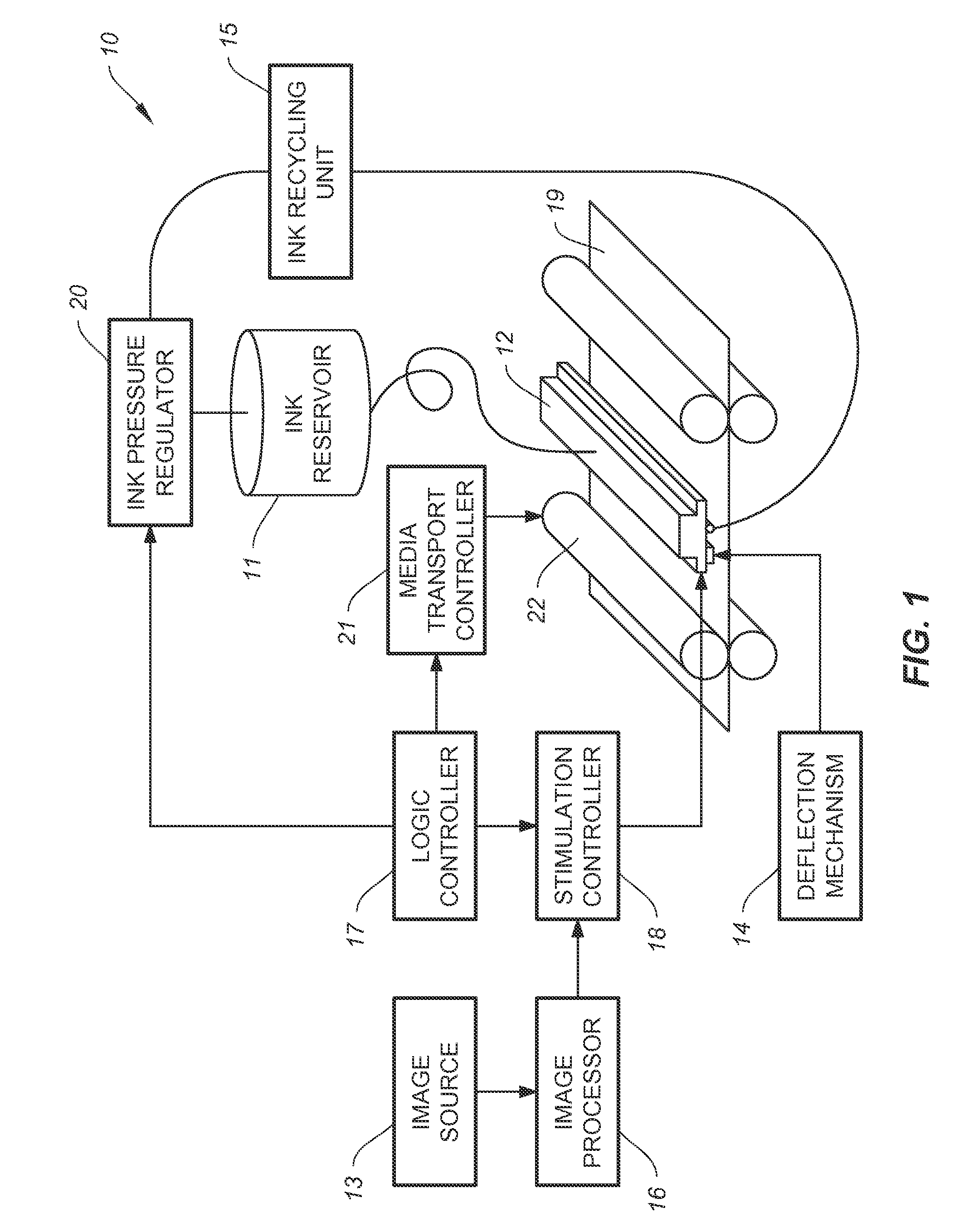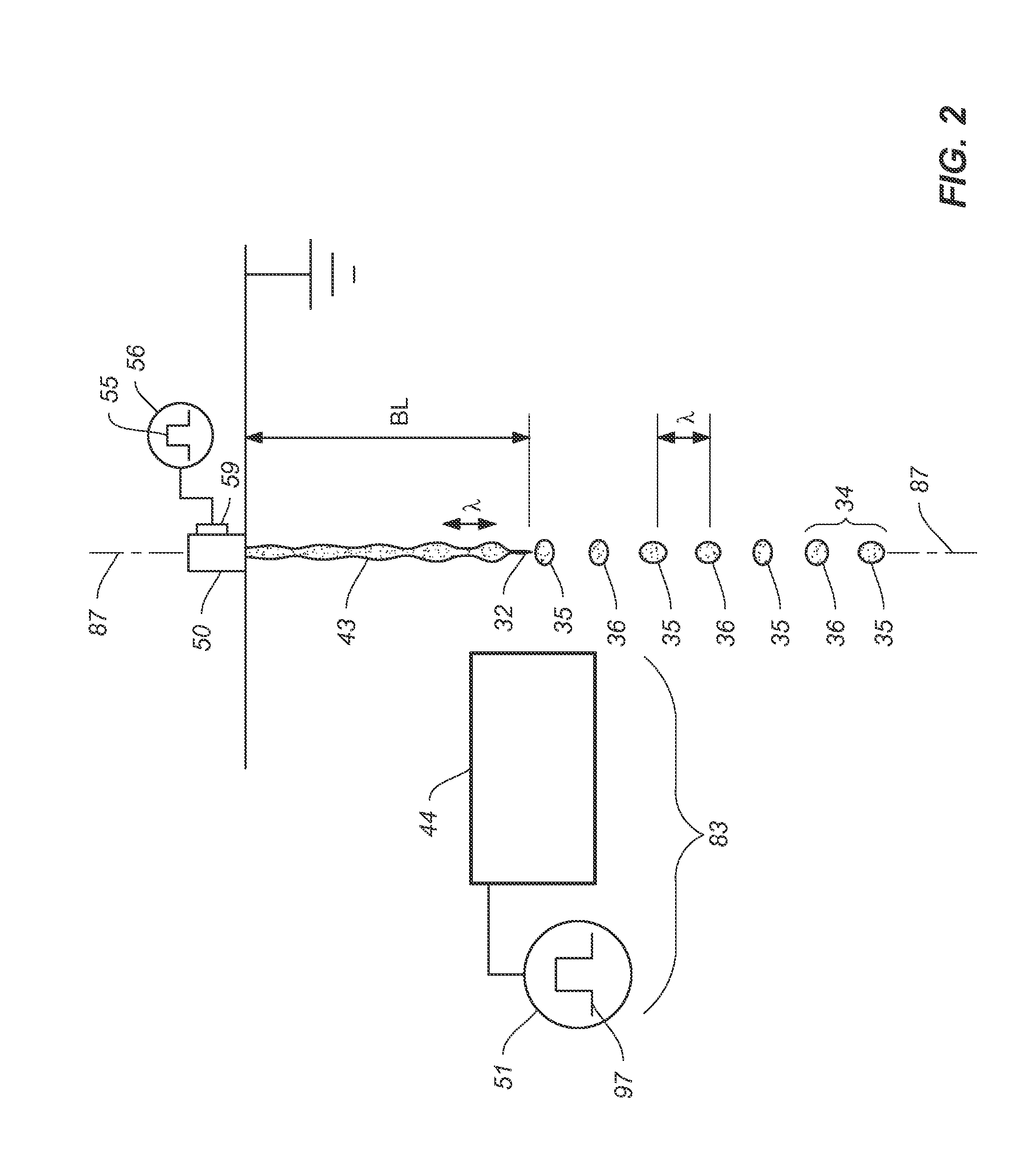Drop placement error reduction in electrostatic printer
an electrostatic printer and drop placement technology, applied in printing, inking apparatus, other printing apparatus, etc., can solve the problems of image artifacts, variation in the charge of print drops, limit the minimum spacing between adjacent electrodes, and therefore resolution of printed images, so as to reduce drop placement errors and increase print margins
- Summary
- Abstract
- Description
- Claims
- Application Information
AI Technical Summary
Benefits of technology
Problems solved by technology
Method used
Image
Examples
second embodiment
[0096]FIGS. 7A-7C show the continuous inkjet system according to this invention operating utilizing the first print drop selection scheme illustrating various print conditions. Shown are cross sectional viewpoints through a liquid jet of in which relatively non-deflected large drops 49 and relatively non-deflected non-print drops 36 are collected by catcher 67 while deflected print drops 35 are allowed to pass by the catcher and be printed on recording medium 19. FIG. 7A shows a sequence of drop pairs in an all print condition while printing at half the maximum recording medium speed, FIG. 7B shows a sequence of drop pairs in a no print condition while printing at less than or equal to half the maximum recording medium speed and FIG. 5C shows a normal print condition in which some of the drops are printed while printing at less than or equal to half the maximum recording medium speed. In FIG. 7B, large drops 49 are shown near break off as two separate drops 49a and 49b which may bre...
third embodiment
[0101]FIGS. 8A-8B show cross sectional viewpoints through a liquid jet of a continuous inkjet system utilizing the first print drop selection scheme according to this invention having an integrated electrode and gutter design. FIG. 8A illustrates a sequence of drop pairs in an all print condition operating at half maximum recording medium speed and FIG. 8B illustrates a sequence of drop pairs in a no print condition operating at half maximum print speed or lower. The print drops 35 in FIG. 8A are shown as having a positive charge while the non-print drops 36 are shown as having a negative charge. Therefore they are deflected away from the catcher and shown as being deflected to the right relative to the liquid jet axis 87.
[0102]All of the components shown on the right side of the jet 43 in FIGS. 8A-8B are optional and make up a third alternate embodiment of this invention. Insulator 68 and optional insulator 68a are adhered to the top surfaces of charge electrode 45 and optional sec...
PUM
 Login to View More
Login to View More Abstract
Description
Claims
Application Information
 Login to View More
Login to View More - R&D
- Intellectual Property
- Life Sciences
- Materials
- Tech Scout
- Unparalleled Data Quality
- Higher Quality Content
- 60% Fewer Hallucinations
Browse by: Latest US Patents, China's latest patents, Technical Efficacy Thesaurus, Application Domain, Technology Topic, Popular Technical Reports.
© 2025 PatSnap. All rights reserved.Legal|Privacy policy|Modern Slavery Act Transparency Statement|Sitemap|About US| Contact US: help@patsnap.com



